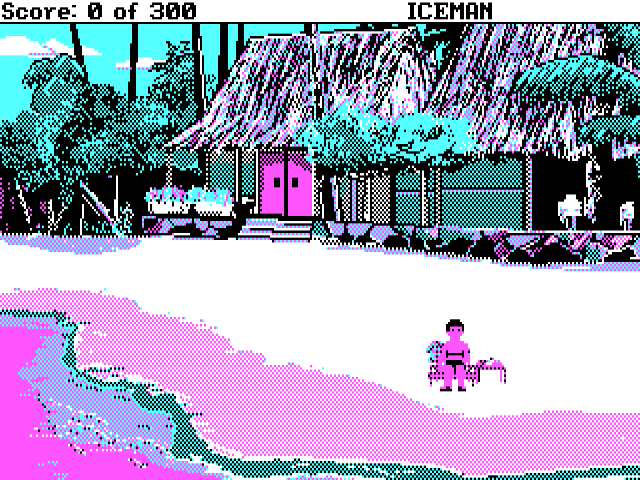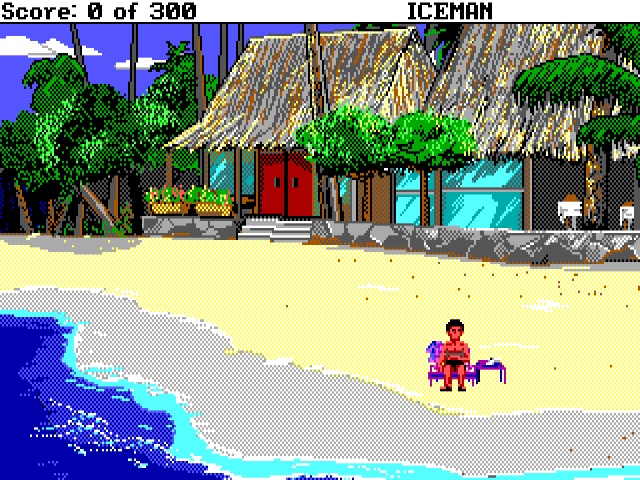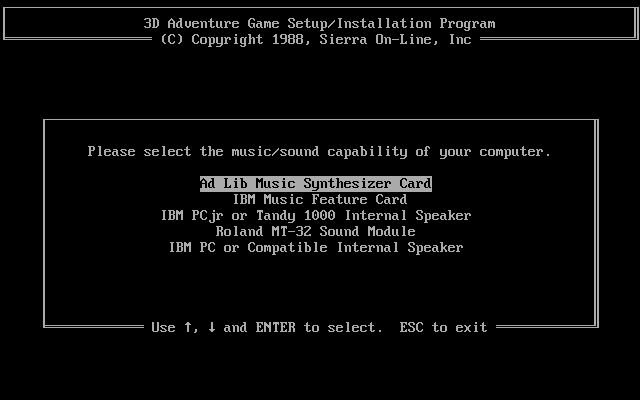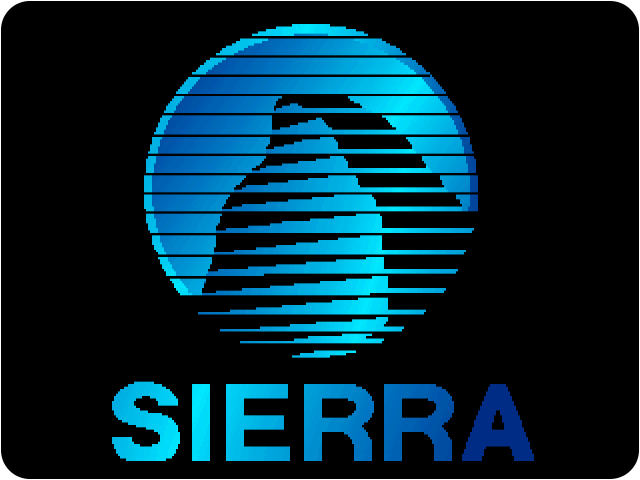Given the opportunity, I could spend hours and hours reminiscing over Sierra On-Line video games from the 80s and 90s. King's Quest, Space Quest, Police Quest, Hero's Quest *ahem* Quest for Glory, etc. (An early example of a video game copyright law snafu forced the Hero's Quest series to be renamed due to an unfiled trademark. Whoops.) Conquests of Camelot, Conquests of the Longbow, The Colonel's Bequest, EcoQuest. Sierra really covered the market for games with "quest" in their title.
I read once that everyone's experiences playing Sierra games are each unique and slightly different. It's so true! Maybe you played them on a Tandy with the fancy 3-voice chipset's bleeps-and-bloops. Maybe you were like me and your computer was equipped with Colour Crappy Graphics Adapter (CGA) technology that could only display four colours at a time. The CGA palette for most games on my first computer was black, white, cyan, and magenta. Maybe your Hercules graphics card rendered a green or amber monochrome screen. Or maybe you only had a PC speaker and never got to experience the rich audio of the Roland MT-32 Multi-Timbre Sound Module or its step-down cousin the AdLib Music Synthesizer Card. However you played these games, whatever your setup included, you probably have great memories like I do.


Codename: ICEMAN © Sierra On-Line & Activision Blizzard
What a difference an Enhanced Graphics Adapter (EGA) 16-colour graphic mode makes! The colour range immensely improved upon the CGA standard. The two images above are not pixel perfect, but are a close enough approximation that suits the example I was going for. The data files are stored in single pixel format, but pixels as we know them today were different back then: they were rectangular. The pixels of yore were 20% taller and had a pixel aspect ratio of 1:1.2. Therefore, to render an accurate screenshot using today's computer systems, one must apply some sort of aspect ratio correction to stretch the image vertically a little bit.
To the best of my recollection (helped with some rabbit hole discovery/research on the world wide webs) these were the specifications of our family's first Epson Equity personal computer:
- NEC V30 processor running at 4.77 MHz (or 7.16 MHz when you pressed the "Turbo" button zooo-oooom!)
- 640 KB RAM and 16 KB ROM
- 5 ¼" floppy disk drive (with a storage capacity of either 360 KB or 1.2 MB)
- 20 MB hard disk
This computer was lovingly referred to as "MAGGIE" since this was the spontaneous label we applied to the C: drive. On Christmas morning after turning it on for the first time someone asked, "What should we name it?" Our dad's suggestion won, possibly a reference to Maggie Simpson?
I was fortunate to go through a few computer upgrades in my youth. We eventually upgraded to an custom-built Intel 486DX2 (with a math coprocessor!) running MS-DOS 6.22 that originally came with 4 MB of RAM. When we later added another 4 MB stick purchased from the local Radio Shack for a grand total of 8 MB of RAM, it really motored! This particular computer was a step up in the graphics department with its Video Graphics Array (VGA) 256-colour video card and its Sound Blaster 2.0 sound card. Fancy, schmancy.
When I was in high school during the boom of the multimedia CD-ROM era, we settled on an all-in-one Compaq something-or-other with an Intel Pentium microprocessor and Windows 95. These computers were absolute beasts and I graciously owe my livelihood (and professional life) to them, who knows what I'd be doing today if we didn't have a personal PC growing up. Thank you Mom & Dad!
Each upgrade was an excuse to replay my favourite games. While progressing from CGA to EGA and then to VGA was certainly an enhancement, the most significant to me was when our family was gifted an AdLib sound card. I read about sound cards in the Sierra News Magazine and from paper advertisements included in the game boxes, but nothing could prepare my ears for the first time my computer sang to me.
Our family had moved across the country from British Columbia to Nova Scotia and I begged my parents to pack the computer carefully as I would have been distraught if Maggie was damaged in the move. We settled in New Glasgow, NS and half a year later we packed up again further east to Sydney Mines, NS. In both towns I had no problems meeting nerdy gamer types who I could share my obsession with. "Do you play Sierra games?" was usually how I broke the ice.
The girls across the street were our age and out came my impressive Grade 6 pick-up line, "Do you play Sierra games?" Turns out they did! Their dad was also into computers and he had spare parts just lying around. Sound cards, modems, adapters, oh my. He wound up gifting us a 2,400 baud dial-up modem along with an AdLib sound card. He helped us install them and this was the fist time I'd ever seen inside the computer! Wow. I was amazed at what made it tick and wanted to learn more. Thank you Andy!
A single black bookshelf miniature speaker was now plugged into the new audio jack on the back of our computer. I ran the INSTALL.EXE "3D Adventure Game Setup/Installation Program" for King's Quest IV: The Perils of Rosella and re-configured the music/sound capability to take full advantage of this curious AdLib Music Synthesizer Card now living inside the PC.

I could hardly contain my excitement when the first notes piped out of the speaker. I actually squealed. I had to quit out of the game to start the music over again and begged my brothers to be quiet. My little brain exploded. I'm pretty sure that I spent the next few weeks indoors re-exploring every game in our small library, listening to and falling in love with each title all over again.
As good as the AdLib is, it pales in comparison to the Roland MT-32. The computers we now use in 2021 are powerful enough to imperfectly-but-pretty-damn-closely emulate the Roland MT-32 courtesy of a software program called Munt. By pairing a virtual MT-32 with DOS emulators such as DOSBox or ScummVM, we can finally experience Sierra games as the designers, programmers, artists, and musicians intended: with the best graphics and the best audio.
I'll admit to something controversial here: sometimes I feel that modern AAA video games are too overwhelming for me. It's a lot more fun to tweak a DOS emulator to get the settings just right and enjoy an evening exploring Daventry, walking the beat or flashing the lights in a Lytton PD cruiser, or freeing the man from the beast in the Spielburg Valley.
Thank you Sierra for all the memories over the years. Now it's time to go and play...
